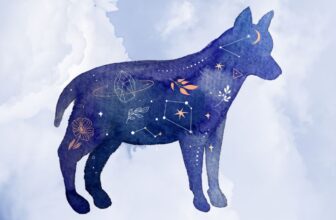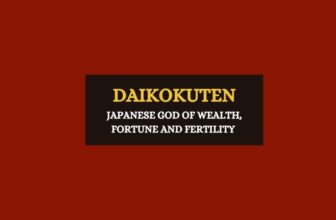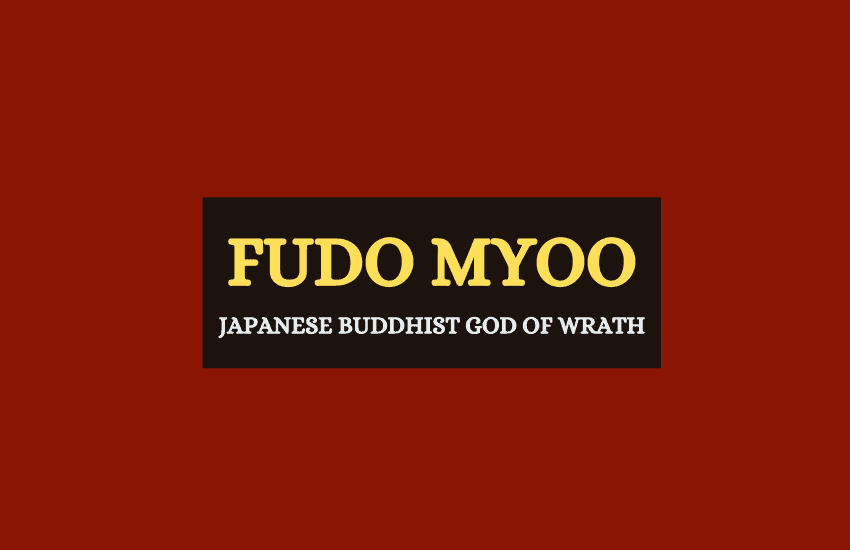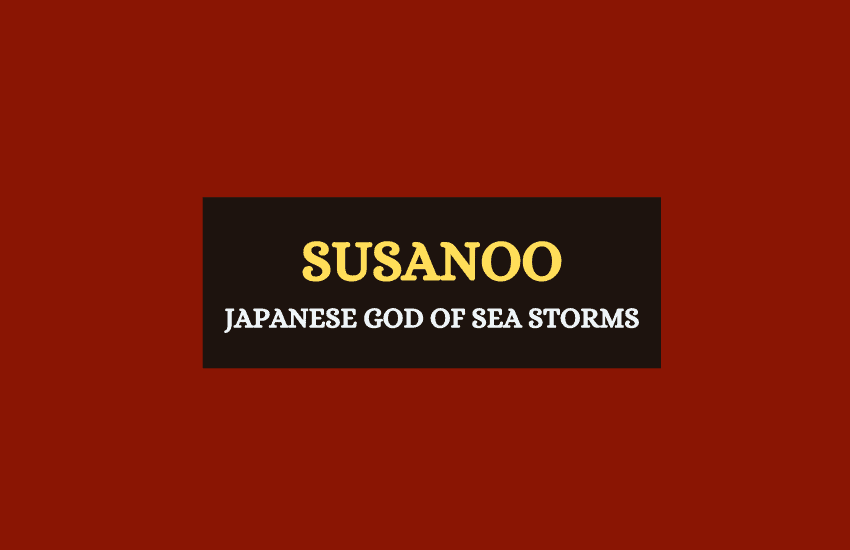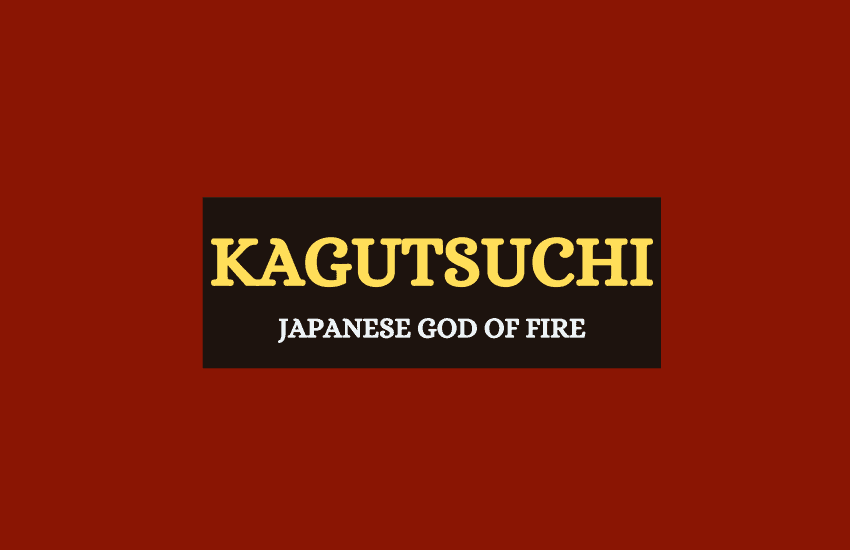
Table of Contents
As the Japanese kami (orgod) of fire, Kagutsuchi has one of the most unique and fascinating stories in Shintoism. It is a rather short story too but, just like a raging forest fire, it has affected all of Shinto mythology and has made Kagutsuchi one of the best-known and most worshipped kami in Japan.
Who is Kagutsuchi?
The name of the fire kami Kagutsuchi, Kagu-tsuchi, or Kagutsuchi-no-kami literally translates as To shine powerfully. He’s also often called Homusubi or He who starts fires.
One of the first children of the Father and Mother deities of Shintoism, Izanami and Izanagi, Kagutsuchi changed the very landscape of Shinto mythology with his very birth.
Accidental Matricide
The two major kami of the Shinto pantheon and Kagutsuchi’s parents, Izanagi and Izanagi were hard at work, populating the land with people, spirits, and gods. Little did they know, however, that one of their children would be permanently engulfed in flames (or even made out of fire, depending on the myth).
Being a kami of fire, when Kagutsuchi was born he burned his mother Izanagi so badly that she died shortly after. There doesn’t seem to have been any malice in this accident and Kagutsuchi can hardly be blamed for hurting and killing his own mother.
Nevertheless, his father Izanagi was so furious and stricken with grief that he immediately took out his Totsuka-no-Tsurugi sword called Ame-no-o-habari-no-kami and decapitated his fiery newborn son.
What’s more, Izanagi then went on to chop Kagutsuchi into eight pieces and tossed them around the islands of Japan, forming the eight major volcanoes of the country.
Curiously enough, however, this didn’t really kill Kagutsuchi. Or rather, it killed him but he continued being worshipped by Shinto followers and anything from forest fires to volcanic eruptions was still attributed to him.
To make matters even more complicated, the eight pieces of Kagutsuchi also became their own mountain kami deities, each associated with its mountain. Together, however, they still formed a conscious and “alive” Kagutsuchi.
A Post-Mortem Octodad
Despite being decapitated and chopped to pieces at birth, Kagutsuchi also found a creative way of giving birth to eight kami (in addition to the eight mountain kami that are his severed body parts).
The way he did that was by “impregnating” his father’s sword with his own blood. Simply put, as Kagutsuchi’s blood was dripping from Izanagi’s sword, eight new kami were born from it.
The most well-known of these new kami are Takemikazuchi, a god of swords and war, and Futsunushi, a kami of thunder and martial arts. But there were also two famous water kami born from Kagutsuchi’s blood – the sea god Watatsumi and the rain god and dragon Kuraokami. Whether the birth of these two water kami was in response to Kagutsuchi’s birth is not really clear. There are several other births that followed, however, which were in direct response to all that occurred in Kagutsuchi’s short life.
The Last Births of Izanami
Even though Izanami was technically killed by giving birth to Kagutsuchi, she still managed to give birth to several other kami before passing to the Underworld of Yomi. This version of the myth was believed to be an added 10th-century Shinto story that tells of this.
According to the story, before Izanami died of her burns (and, presumably, while Izanagi was still busy mutilating his son’s body) the Mother goddess managed to withdraw from the scene and give birth to several more kami – the water kami Mizuhame-no-Mikoto, as well as minor kami of water reeds, gourd, and clay.
This may seem weird to people outside of Japan but the themes of these kami are intentional – because forest and city fires were a serious problem for the people of Japan throughout the country’s history, most people were carrying fire-fighting equipment with them at all times. And this equipment included precisely a gourd of water, some water reeds, and a bit of clay. The water was to be poured over the rising flames and the reeds and clay were to then smother the remains of the fire.
While this is an “add-on” of sorts to Shinto mythology, its connection to Kagutsuchi’s birth into the world is clear – with her dying breath, the Mother goddess managed to give birth to several more kami to save Japan from her destructive son.
Of course, once she got into the Underworld Yomi, the then-undead-Izanami continued giving birth to new kami but that’s a different story.
Symbolism of Kagutsuchi
Kagutsuchi may be one of the most short-lived gods in Shintoism and in most other mythologies but he has managed to change the landscape of his religion more than most.
Not only did Kagutsuchi kill his own mother and start the chain of events that led to her turning into a goddess of death in Yomi, but he even created multiple kami himself.
Kagutsuchi’s most significant role and symbolism in Japanese mythology, however, is as a god of fire. Fires have been plaguing Japan for millennia and not just because Japan is a forest-covered country.
One of the major factors that have shaped Japan’s entire culture, lifestyle, architecture, and mentality, is the country’s predisposition for natural disasters. The constant earthquakes and tsunamis rocking the country every year have forced the people there to build their homes from light, thin wood, and often from literal paper instead of inner walls.
This has been crucial for the people of Japan as it helped them quickly and easily rebuild their homes and entire settlements after an earthquake or a tsunami.
Unfortunately, it’s that precise architectural choice that also turned fires into an even bigger danger than they were anywhere else in the world. While a simple housefire in Europe or Asia would usually burn down just one or two homes, minor housefires in Japan leveled entire cities on an almost-annual basis.
That’s why Kagutsuchi remained a prominent kami throughout the country’s history even though he was technically killed before Japan was even populated. The people of Japan continued trying to appease the god of fire and even held twice-yearly ceremonies in his honor called Ho-shizume-no-matsuri. These ceremonies were sponsored by the Imperial court of Japan and included controlled kiri-bi fires to appease the fire lord and satiate his hunger for at least six months until the next Ho-shizume-no-matsuri ceremony.
Importance of Kagutsuchi in Modern Culture
As one of the most colorful and enigmatic kami in Shintoism, Kagutsuchi has not only been frequently featured in Japanese theaters and art but is even popular in modern-day manga, anime, and video games. Obviously, as a kami that was killed at birth, such modern-day portrayals are rarely “accurate” to the original Shinto myth but are still clearly inspired by it.
Some of the most popular examples include the anime Mai-HIME which includes a dragon named Kagutsuchi, the world-famous anime series Naruto where he’s a fire-wielding ninja, as well as video games such as Nobunaga no Yabou Online, Destiny of Spirits, Puzzles & Dragons, Age of Ishtar, Persona 4, and others.
Wrapping Up
Kagutsuchi’s myth is tragic, commencing with homicide and then outright murder on his father’s part. However, even though short-lived, Kagutsuchi is an important deity in Japanese mythology. He’s also not portrayed as an evil god but is ambivalent.




